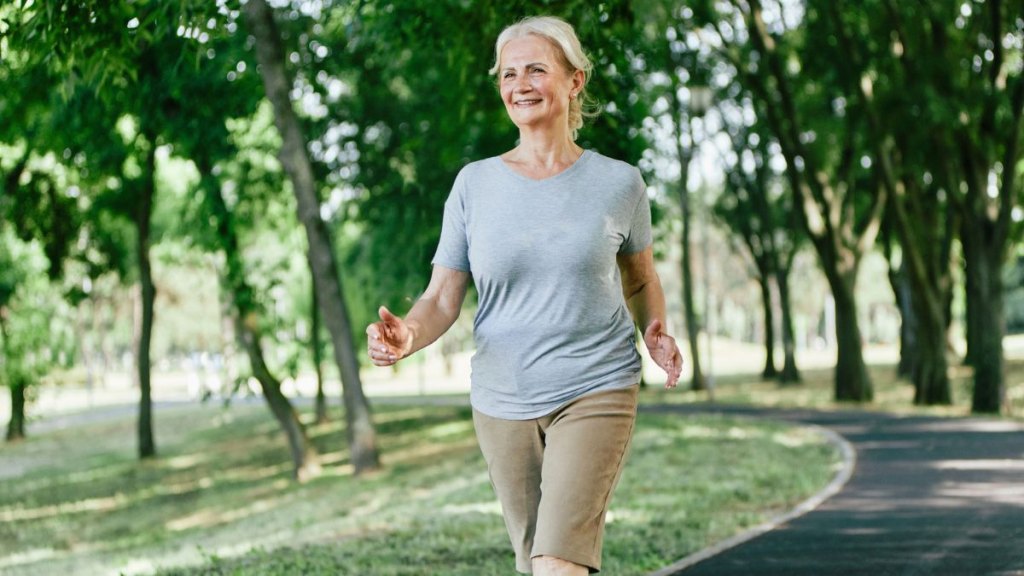Unlock Unbelievable Strength and Longevity in Just 14 Minutes a Day — No Gym Required!
So, here’s a little brain teaser for you: What if I told you that the secret to adding more life to your years might just be as simple as slipping on your sneakers and hitting the pavement—not for an hour, but for just a brisk 15 minutes a day? I know, it sounds almost too good to be true. We all dream of living long and thriving well, yet many of us get tangled up in thoughts of grueling workouts or impossible diets. But guess what? Recent science is flipping that narrative on its head, proving that short bursts of walking can seriously boost your longevity. That’s right—no fancy gym membership, no high-priced personal trainer—just you, your two feet, and a few minutes of purposeful movement. Intrigued? You should be. This isn’t about slow meandering; it’s about walking with a pep in your step that gets your heart singing and your muscles chanting, all while adding quality chapters to your story. Ready to find out how those 15 minutes can change everything? LEARN MORE.

Although we all hope to live a long and healthy life, few of us are certain about what it actually takes to achieve that goal. You might assume your best shot at improving your health and longevity requires intense exercise routines or a super-strict nutrition plan. Surely small lifestyle tweaks can’t make that much of a difference, right? Think again. Research shows that spending just 14-15 minutes a day walking can improve your longevity and overall health—no pricey gym membership required.
How walking boosts longevity
New research shows that it doesn’t take a lot of time or effort to transform your health and reap the benefits of a more active lifestyle. In fact, walking daily, even for a short time, can noticeably improve your longevity. Research published in the American Journal of Preventive Medicine found that participants who walked briskly for just 15 minutes a day had a 19 percent lower risk of death from all causes.
“Brisk walking gets your heart rate up, which makes your heart stronger and improves how well your body uses oxygen,” explains Raj Dasgupta, MD, Chief Medical Advisor for Garage Gym Reviews.
Additional support for brisk walking comes from research published in PLOS ONE. In this study, older adults who were frail or at risk of frailty and walked briskly at a pace of about 100 steps per minute for 14-minute sessions three times a week experienced significant improvements in lower-body strength and mobility within 12 weeks.
“Brisk walking works your leg muscles in a consistent, low-impact way,” says Dr. Dasgupta. “It can help you build strength, improve your coordination and increase circulation to your muscles and joints. For older adults, that means better balance, more stable walking and a lower risk of falls. It’s also gentle enough to be sustainable, which is key.”
Why brisk walking?
While all types of regular walking and other forms of exercise are beneficial, brisk walking offers unique advantages. The research demonstrates it’s not just the number of steps you take, but how quickly you take them.
“Brisk walking is a sweet spot,” says Dr. Dasgupta. “It’s not too intense, but it’s enough to challenge your heart, lungs and muscles. That level of effort helps improve your fitness level, manage body weight and build strength faster than a slow stroll.”
So, what does brisk walking really look like in everyday life? Do you need to move at a near-jogging pace, or is it enough to simply pick up the tempo a bit?
“Brisk walking means you’re moving at a pace that makes you breathe a little harder, but you can still talk, just not sing,” says Dr. Dasgupta. “That’s a good real-life test. If you like numbers, aim for about 100 steps per minute or a 15-minute mile. If you’re using a smartwatch, your heart rate should be in the moderate zone, usually 50 to 70 percent of your max.” (Learn more about healthy heart rate zones by age here.)
Short strolls can pay big dividends
It’s easy to get caught up in outdated messaging, like needing 10,000 steps a day or walking for a full hour to improve cardiovascular health or reduce the risk of longevity-hampering illnesses. But new research challenges that. Even a fraction of that time can be beneficial.
“You don’t need an hour-long workout to see results,” says Dr. Dasgupta. “For women in midlife, walking briskly for just 15 minutes a day helps protect against muscle loss, supports bone health, boosts mood and keeps the heart strong. It’s also something most people can stick with, and consistency is what really drives results.”
3 simple tips to make your walking more effective
If you’re used to leisurely strolls and want to try brisk walking, the good news is there are simple adjustments that can make a big difference. Incorporating these small tweaks can help you gradually build up your speed.
- Use your arms: “Bend them at 90 degrees and swing them naturally—it helps you move faster and adds some upper-body work,” says Dr. Dasgupta.
- Take quicker—not longer—steps: “Fast, short steps are more efficient than trying to stretch your stride, and they help you pick up speed without straining,” reveals Dr. Dasgupta.
- Stand tall: “Good posture makes it easier to breathe, helps your core stay engaged and prevents soreness in your back and hips,” says Dr. Dasgupta.
Ultimately, a short-and-sweet daily walk can not only improve your wellbeing, but may also add healthy years to your life. So the next time you sit down to call a friend or scroll through TikTok, consider getting a few steps in while you do.



















Post Comment